How Does The FlexSolar 40W Solar Panel Compare To The 60W?
This past week I have written reviews for both the FlexSolar 40W solar panel and the larger 60W version.
I figured I should write a comparison post while it’s still fresh on my mind, so that’s what this article is going to be.
The goal isn’t necessary to find a winner between the two since their use-cases differ a bit, in my opinion.
Related Post: Best Portable Power Banks For Traveling
But I want to make the differences clearer, and talk about what you should consider when deciding which to get.
As the name of the two implies, they’re 40W and 60W panels, so we know that the output wattage is different.
But what else is different? Let’s get into it right now by comparing the two panels on a table.
FlexSolar 40W VS 60W – Specifications Compared
Last update on 2024-04-18 / Affiliate links / Images from Amazon Product Advertising API
A Closer Look At The Differences
Now that we’ve got an idea of how the two panels differ in the spec sheet, let’s talk a bit about why it matters.
Design
Both panels unfold to expose the panels.
The 40W model unfolds to one row of six panels, while the 60W unfolds to two rows of three panels.
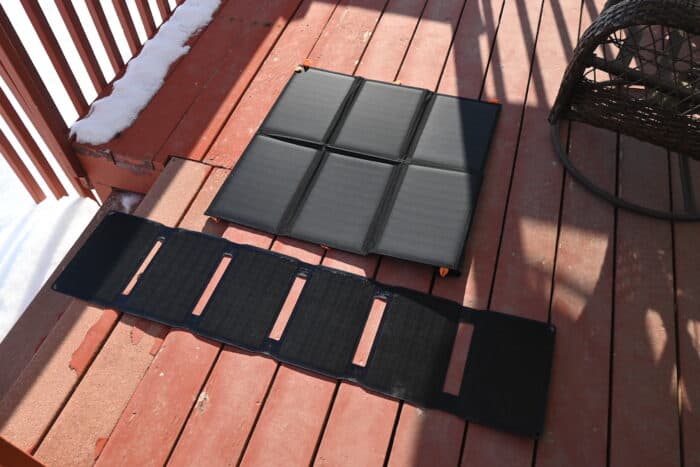
One thing I disliked in my review of the 40W is that it doesn’t have a handle or a carrying case.
The 60W panel has a handle, and a zipped netted storing pouch where the junction box is located.
Due to the cloth used on the 60W model, it’s harder to keep clean than the 40W that is molded together.
Both of them have a couple of holes/hooks that make it easier to hang on a vehicle or tree.
Wattage
The most obvious difference between the two is the wattage.
One is rated at 40W, and the other one at 60W.
This doesn’t mean that your phone or tablet is going to charge faster though, since the wattage rating is what the DC port can output.
The DC port is meant to be used with portable power banks and power stations, and is not where you plug in USB cables.
Related Post: Easiest Way To Use Solar Power In Emergencies
If you’re only going to charge devices via USB A cables, the 40W panel might be the better choice.
However, if the sun isn’t very strong where you’re at, the larger 60W panel might be a safer bet. It will have an easier time outputting the 5-18W your USB device is asking for.
I can charge all of my portable devices via USB C and since my laptop can handle up to 100W input, the 60W is the better option for my needs.
Ports
The only difference when it comes to ports is that the 60W model has an additional USB A port. It has been put on a coiled cable, which in many cases makes it easier to use.
The power output of the ports are almost the same, except for the 40W vs 60W I mentioned above. That’s the DC and USB C port output, not the USB A.
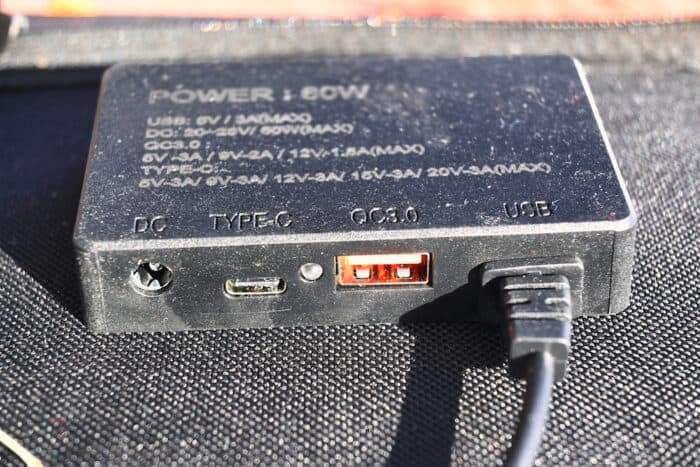
By having an extra USB A port, you’ll be able to plug in two devices via USB A cables at the same time. If you need to charge several devices, this is great.
IP-rating
The IP-rating tells us how dust- and waterproof a device is.
Neither the IP65 or IP67 rating means that it’s fully waterproof, so you should not let either of the panels get too wet.
The 40W panel with the IP67 rating can handle a little bit more in terms of liquids, but I don’t recommend submerging it in water since the ports on the junction box are not protected.
In The Box
The 40W model does only include two carabiners, but no cables to charge anything.
The 60W model includes a DC5521 cable, a DC to alligator clamps cable, and four different DC connectors.
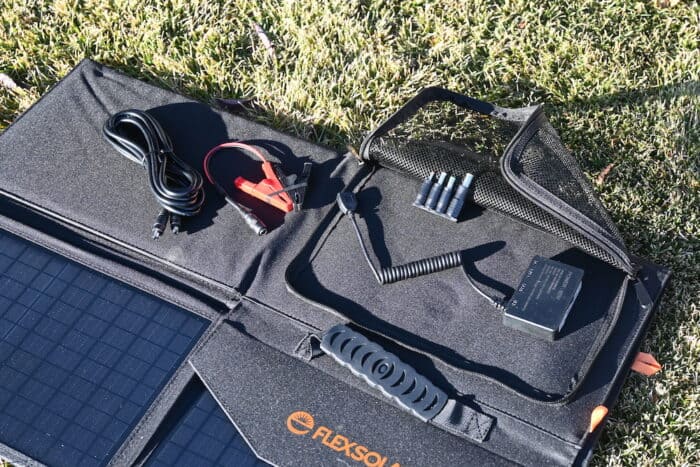
This means that the 60W model is ready to be connected to portable power stations right out of the box, but the 40W is going to need extra cables and adapters.
Even though the 60W model comes with alligator clamps, it should not be connected directly to a 12V battery without a solar charge controller.
One of the DC connectors included with the 60W panel is the 8mm, which is what a lot of the popular power stations use. Like Jackery, Goal Zero, and Bluetti.
Related Post: Goal Zero Vs Jackery
Some newer models from these companies use other input connectors though, so make sure you check before you buy.
Size & Weight
Unsurprisingly, the 60W model is both heavier and larger.
What is a little bit surprising is how big the difference is.
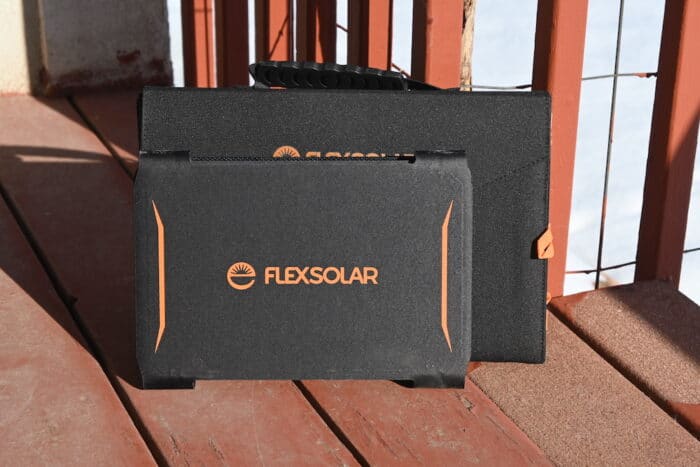
The 60W model is more than twice as heavy at 6.4 pounds, compared to the 40W model’s 2.86 pounds.
That can be a dealbreaker for some depending on how and where they plan on using the panel.
The 40W might also be considered too heavy for backpacking, and I recommend getting one of the smaller models if that’s the case.
Conclusion
I have listed the differences, now you’re going to have to decide what matters the most in your specific case.
Is the output wattage more important than the size of the panel? Are you buying a panel for backpacking, just to be able to charge your phone? Is it possible that it will get rained on?
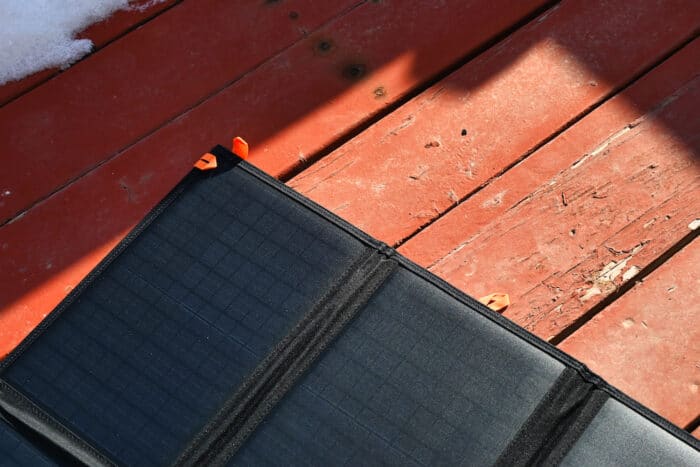
It’s also possible that neither of the two is the best option for your needs. Maybe you need a smaller one for backpacking, or a larger one for RV living.
If you’re still not sure, please leave a comment and tell me how and where you plan on using the panel. I’ll get back to you as soon as possible.



